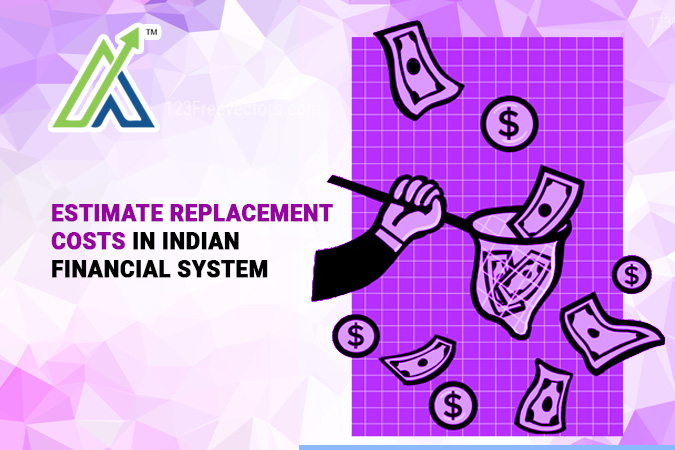Replacement cost estimation holds a vital position in the fields of accounting and finance. The purpose of this is to find out the cost of replacing an item at today’s price. Important decisions like investments, insurance, and financial reporting are made based on this.
Why Replacement Cost Estimation Matters?
- Insurance Valuation: Insurance companies rely on replacement cost to decide how much to pay out if something gets damaged or lost. For instance, if a factory’s machinery breaks down, the insurance pay-out is based on what it would cost to replace that machinery today.
- Financial Reporting: Companies use replacement costs to report their assets, showing a more accurate value than historical costs. For example, a company might have old manufacturing equipment, but its replacement cost reflects the price of new, modern machines.
- Investment Decisions: Investors look at replacement costs to see if it’s worth replacing old assets with new ones. A real estate investor might check the replacement cost of a building before buying to see if the investment makes sense.
Methods to Estimate Replacement Cost
Different methods are used to estimate the replacement cost of assets. The choice depends on the type of asset and available data.
- Current Market Price Method
Check the current market price of similar assets.
For instance, a company estimates the cost of new delivery trucks by looking at the prices of similar trucks in the market. - Indexation Method
Adjust the historical cost of an asset using an inflation index.
For example, a factory built ten years ago for ₹50 crore is indexed using a construction cost index to find its current replacement cost. - Appraisal Method
Professional appraisers assess the asset’s value considering age, condition, and new technology.
For instance, an appraiser checks a commercial property’s replacement cost by looking at recent construction costs and other factors. - Unit Cost Method
Calculate the cost per unit and multiply by the total number of units.
For example to estimate a pipeline’s replacement cost, multiply the cost per kilometre of new pipeline by the total length of the existing one. - Quantity Survey Method
Detailed measurements and cost estimates for each part of the asset.
Let’s consider an example where a detailed survey estimates the replacement cost of a manufacturing plant, considering machinery, installation, and other parts. - Book Value Adjustment Method
Adjust the book value by adding back depreciation and then adjusting for current market conditions.
For an instance a machine has a book value of ₹5 lakh after depreciation. Adding back ₹2 lakh for depreciation and adjusting for current tech, the replacement cost might be ₹8 lakh.
Questions to understand your ability
Qus: What’s the real deal with replacement cost estimation?
- Finding the original cost of an asset
- Figuring out today’s price to replace an asset
- Calculating how much an asset has depreciated
- Guessing the salvage value of an asset
Qus: Which of these is NOT a main reason to estimate replacement cost?
- Making smart investment choices
- Planning insurance coverage
- Cutting business expenses
- Accurate financial reporting
Qus: Which method tweaks the historical cost with an inflation index?
- Current Market Price Method
- Indexation Method
- Appraisal Method
- Unit Cost Method
Qus: The Quantity Survey Method is about:
- Checking prices in the market
- Using an inflation index
- Doing detailed measurements and cost estimates for each part
- Having professionals assess the value
Qus: What’s the Book Value Adjustment Method all about?
- Using current market prices
- Calculating cost per unit and multiplying by total units
- Adding back depreciation and adjusting for today’s market
- Doing detailed physical measurements and estimates
Conclusion
To manage funds, insurance and investment replacement costs help the most. For optimized decision-making, it is necessary to know how these methods work, which helps companies determine accurate asset values. It is essential for financial stability.
These methods will provide the true reality of asset values as well as market conditions. As the economy grows, it becomes necessary for businesses and financial pros.
FAQ's
Replacement cost estimation is key for nailing down accurate financial reports, making sharp investment moves, and laying out solid insurance plans.

